Last of the Duanes
Brief Synopsis
Cast & Crew
James Tinling
George Montgomery
Lynne Roberts
Eve Arden
Francis Ford
George E. Stone
Film Details
Technical Specs

Synopsis
In 1870, gunslinger Buck Duane goes to the town of Welleston, Texas, where his father was murdered on the eve of his re-election as sheriff. Suspecting that Red Morgan, the new sheriff, was involved, Buck talks to him and is forced to shoot one of Morgan's henchmen in self-defense when Morgan signals to the man to shoot Buck in the back. After escaping from Morgan's posse, Buck meets Luke Stevens, a grizzled old outlaw who takes him under his wing. Luke tells Buck that they will go to Rimrock, a notorious hangout, and collect Luke's timid partner, Euchre. Luke warns Buck that because he has now been branded an outlaw, he will be blamed for many crimes he did not commit. When Luke goes to a nearby town for food, he is wounded and captured by the Texas Rangers, lead by Major McNeil and Captain Laramie. Buck rescues Luke, but the old man dies after telling him that Rimrock is run by Jim Bland's gang, under orders from a mysterious boss named Cheseldine. Buck travels to Rimrock, where he meets Euchre, who runs a general store, and saloon owner Kate. Buck tangles with Bull Lossomer, Bland's right-hand man, and further raises the gang's ire when he rescues Nancy Bowdry from them. Nancy had been kidnapped by Bland after the gang killed her father and burned their ranch. Buck, who was Nancy's childhood sweetheart, sends her to his grandfather Tom for safekeeping, and then goes to the town of Huntsville, where he has been falsely accused of killing a woman. Upon questioning the dead woman's child, sheriff Frank Taylor finds that Buck is not the murderer, and Major McNeil offers Buck a conditional pardon whereby he will be cleared of the charge of killing Morgan's henchman if he helps capture Cheseldine. Buck agrees and, after returning to Rimrock, tells Kate, who is the link between Cheseldine and Bland, that he wants to join the gang. Kate reveals that the gang will be holding up a bank the next day, and Buck passes on the information to Laramie, whom McNeil had detailed to help him. Bland receives orders from Cheseldine to set up Buck, and despite a warning from Kate, who is falling in love with Buck, he goes to the bank. Sheriff Taylor almost captures Buck, and he is wounded as he escapes. When he returns to the saloon, Buck finds a distraught Kate, who believes that he has been killed. Kate swears that she did not know of the ambush, and then, while saving Buck from being shot in the back by Cheseldine, is killed herself. Laramie is revealed to be Cheseldine, and soon the entire gang is rounded up. McNeil then makes Buck a deputy ranger and orders him to bring in Morgan. As Buck and Euchre ride to Wellestown, Euchre tells him that Nancy is going to cooking school in Kansas City and will return soon.

Director
James Tinling
Cast

George Montgomery
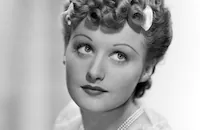
Lynne Roberts
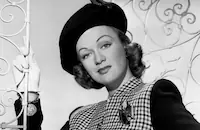
Eve Arden
Francis Ford
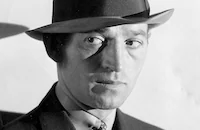
George E. Stone

William Farnum

Joseph Sawyer
Truman Bradley
Russell Simpson

Don Costello
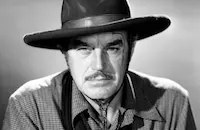
Harry Woods
Andrew Tombes
William Pagan
Leroy Mason
Lane Chandler
Ethan Laidlaw
Paul Sutton
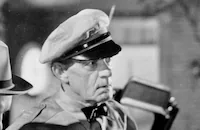
Lew Kelly
Robert Winkler

Ann Carter
J. Anthony Hughes
Paul Burns
Erville Alderson
Harry Hayden
Tom London
Tim Ryan
Arthur Aylsworth
Walter Mcgrail
Russ Clark
Jack Stoney
Tom Moray
Max Wagner
Syd Saylor
Crew
Harry Brand
Charles [g.] Clarke
William Conselman Jr.
Irving Cummings Jr.
Richard Day
Nick Demaggio
W. D. Flick
Norman Foster
Chester Gore
Herschel
William Koenig
Harry M. Leonard
Thomas Little
Jack Mcedwards
Cyril J. Mockridge
Sol M. Wurtzel

Film Details
Technical Specs

Quotes
Trivia
Notes
The film's opening title card reads: "Twentieth Century-Fox presents George Montgomery in Zane Grey's Last of the Duanes." Although the exact relationship between the sources is unclear, according to information in the Twentieth Century-Fox Records of the Legal Department, located at the UCLA Arts-Special Collections Library, Grey's short story, "The Last of the Duanes," was expanded into novel form and entitled The Lone Star Ranger (New York, 1915). In 1914, Grey also wrote a serialized story entitled The Lone Star Ranger, which first appeared in All Story-Cavalier Weekly (May-June 1914). The legal records note that the first halves of the stories "The Last of the Duanes" and "The Lone Star Ranger" were identical and used for the first half of the screenplay of this film, but that only "The Last of the Duanes" was used for the second half. In 1942, the studio released a picture entitled The Lone Star Ranger, based on the second half of the book The Lone Star Ranger, which continued the adventures of "Buck Duane," "Major McNeil" and "Euchre."
According to a July 30, 1940 Hollywood Reporter news item, contributing writer Norman Foster was to direct the film, while a January 20, 1941 Los Angeles Times news item reported that the picture would probably have Randolph Scott, Dean Jagger and Virginia Gilmore in the cast. According to Hollywood Reporter news items, the picture was partially filmed on location at Lone Pine, CA. The Daily Variety review erroneously lists the film editor as Thomas Little, while the Hollywood Reporter review lists him as Thomas DeMaggio. Fox filmed Grey's story four times previously: a 1919 version directed by J. Gordon Edwards and starring William Farnum (Farnum appears in the 1941 picture as "Major McNeil"); a 1924 version directed by Lynn Reynolds and starring Tom Mix; a 1930 version directed by Alfred L. Werker and starring George O'Brien; and a 1930 Spanish-language version entitled El ultimo de los Vargas, which was directed by David Howard and starred George Lewis.












